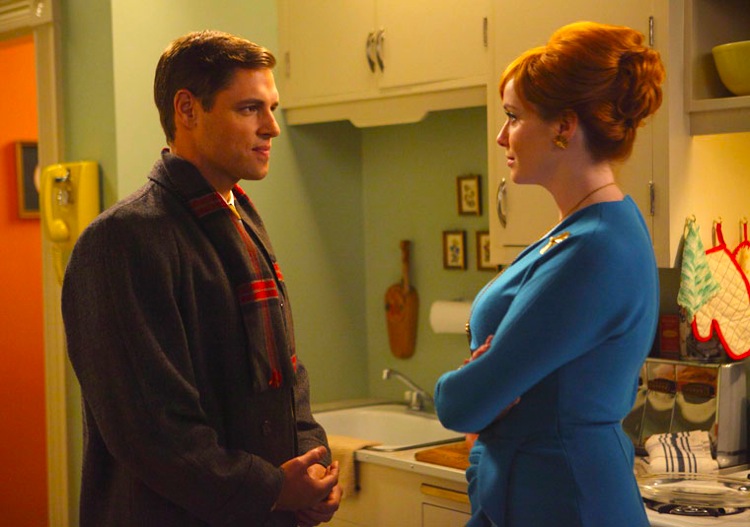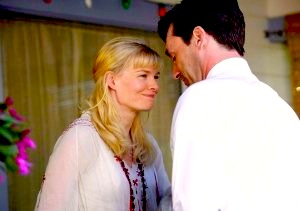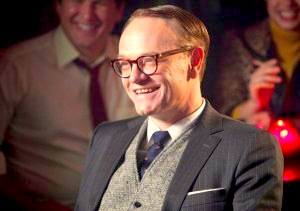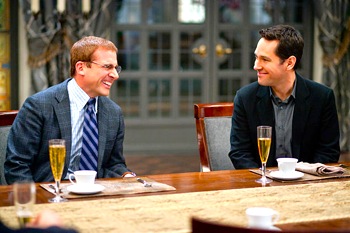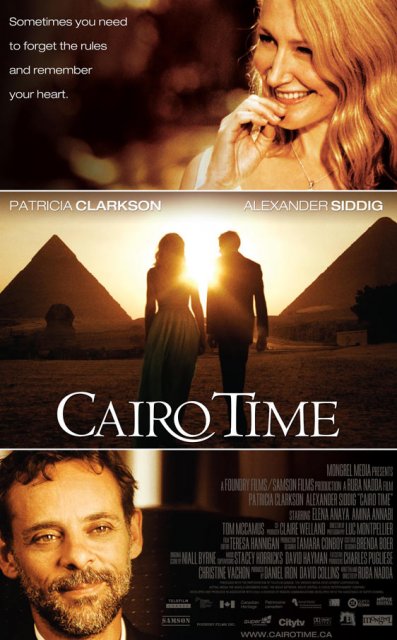By Jason Apuzzo. • SCI-FI GETS POLITICAL. Some of you may recall my recent exchange with the LA Times’ Patrick Goldstein on the political/ideological overtones of Hollywood’s current sci-fi craze. I think the new trailer (see above) for the forthcoming alien invasion pic Skyline makes this point more vividly than anything I’ve seen, although the poster for Battle: Los Angeles certainly comes close. [Is there some reason aliens are targeting LA, these days? Is it the traffic?]
The trailer basically associates the film’s frightening alien invasion of Los Angeles with the ‘invasion’ of the New World by Europeans in the 15th and 16th centuries. And these associations are spelled out in the trailer by … Dan Rather, and MSNBC’s Lawrence O’Donnell! [By way of quoting Stephen Hawking’s recent comments on the dark possibilities associated with alien contact.] Talk about ‘on-the-nose’ filmmaking.
So it looks like Skyline will thematically be taking us directly into Avatar territory: i.e., sub-rosa critiques of White European Invaders as the metaphorical ‘aliens’ we really need to fear. [Sigh.] That’s too bad, because the trailer otherwise looks promising … except for the fact that I’ve already seen this film before, when it was titled War of the Worlds.
One might potentially interpret Skyline as a reverse-riff on the theme of Christian ‘rapture,’ by the way. Just a thought.

• In other sci-fi news, Disney/Pixar’s John Carter of Mars has a release date (June 8th, 2012, in 3D); Scarlett Johansson and Blake Lively are currently tussling over a role in the Robert Downey, Jr. sci-fi thriller Gravity (a role turned down by Angelina Jolie after they wouldn’t pay her $20 million fee); and there’s some colorful casting news for George Miller’s forthcoming 3D-native Mad Max: Fury Road – about which I’m getting quite excited. It turns out that Elvis Presley’s granddaughter, model/actress Riley Keough, has been cast in the film – along with other babes like Zoe Kravitz, Teresa Palmer , Adelaide Clemens and Charlize Theron (of whom I’m not a fan, however).

By the way, according to Hollywood Reporter’s HeatVision blog, here’s Fury Road’s storyline: “Keough will play one of the ‘Five Wives,’ a group of women that [Mad Max] must protect from the bad guys. Zoe Kravitz, Teresa Palmer and Adelaide Clemens are three of other wives.” This film is looking better by the day – much more enticing than what I was expecting. Book me in. Incidentally, since Mad Max is actually protecting women in this film, it’s now obvious to me why Mel Gibson won’t be playing Max anymore.
• The Expendables is coming out soon, and Stallone says he’s already got a ‘radical’ idea for a sequel – provided this first film does well. I’m guessing Stallone sends his team after Bin Laden. You heard it here first.
• Actor James Caan tells Fox News that he’s an “ultra conservative” – which is ironic, given that Caan is currently in the news because he’s starring in a movie that more-or-less glamorizes the porn industry. Just sayin’.
While on the Fox News front, incidentally … the network really earned its name today by having 3 Victoria’s Secret models on as part of a hard-hitting, investigative segment on a new line of brassieres. It really was a great segment – I learned a lot.
• In a recent post entitled, “Christopher Nolan’s Dead Women,” Culture Snob’s Jeff Ignatius notes something that I’ve detected, as well:
In at least four of Christopher Nolan’s seven feature films, the plots and/or fixations are initiated or propelled by the death of a man’s spouse or girlfriend. Considering that Nolan’s primary thematic interest is obsession, isn’t this a little strange?
Yes, it is. Ignatius later dances around the obvious question: namely, whether some, dark misogynistic impulse is at the imaginative core of Nolan’s work. I wish more people would take note of this, because it’s a deeply disturbing aspect not only of Nolan’s work, but of the fandom that worships him.
• Want to see the Hollywood breakdown of who’s donating to Meg Whitman and Jerry Brown? Interesting oddity: Anschutz Entertainment giving $45,400 to Jerry Brown. Also: Haim Saban giving $25,900 to Whitman, even though Saban’s perhaps the Democratic Party’s biggest donor.
• Nikki Finke talks with Mad Men’s Christina Hendricks today. Best exchange:
DH: Is it weird to be a sex symbol?
CH: You know, the good part about that is maybe I’ve contributed to helping women appreciate themselves the way they are, that we don’t all have to be a Size 2 to be beautiful. Anything I’ve done to help change people’s minds about that is something to be proud of, I think.
We share her pride.

• The new trailer for the Christina Aguilera/Cher/Stanley Tucci Burlesque runs through about every biopic cliché in the book, but the funniest part to me is the ending when you learn that Burlesque is going to be out in time for Thanksgiving! Yes, perfect Thanksgiving fare! I know I’ll be there, right after passing the gravy boat.
In related news, Katy Perry also has a new video out today for Teenage Dream, which somehow manages to be both racy and dull at the same time.
• AND IN TODAY’S MOST IMPORTANT NEWS … Piranha 3D’s Kelly Brook has a new interview out today in which she reveals that Piranha 3D’s French director Alexandre Aja discovered her in an LA restaurant … while she was eating fish and chips.
The fish get their revenge on August 20th.
And that’s what’s happening today in the wonderful world of Hollywood …
Posted on August 11th, 2010 at 3:52pm.
